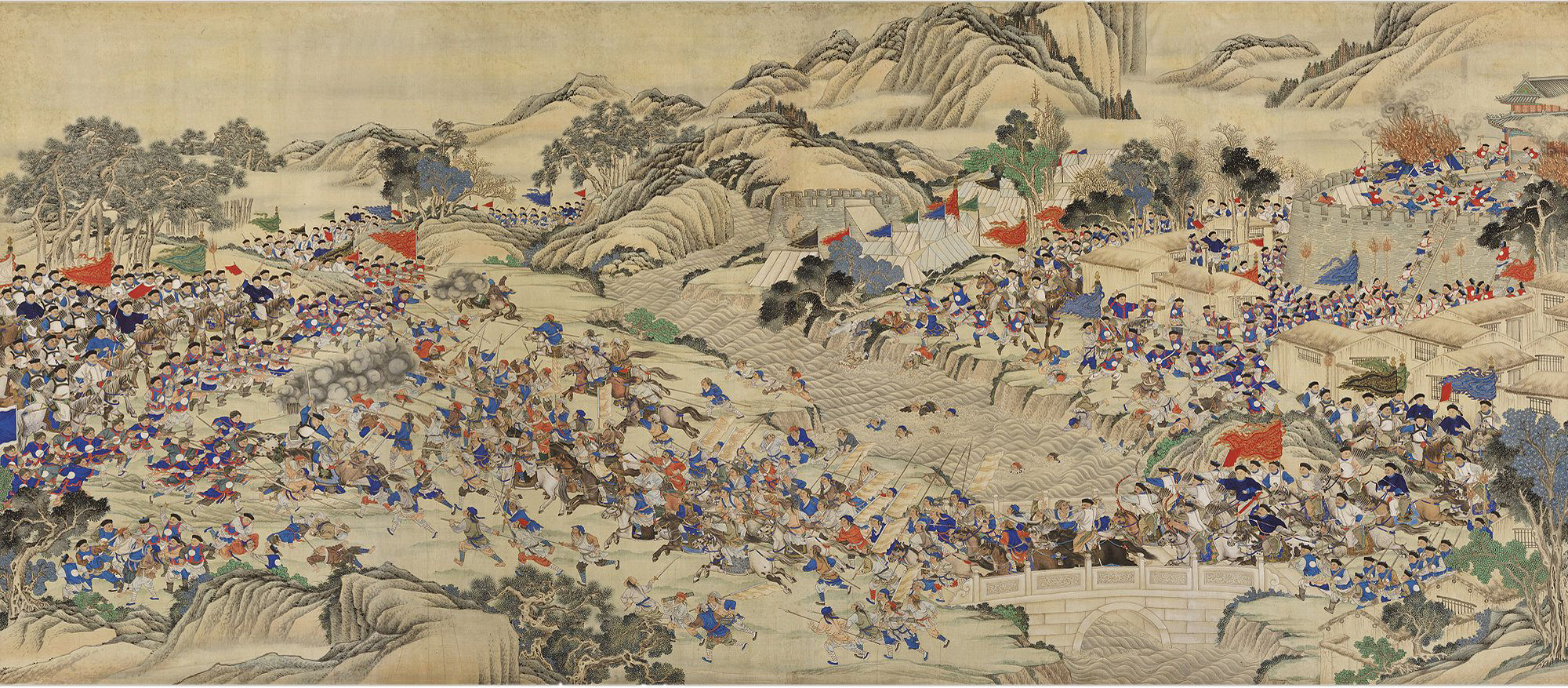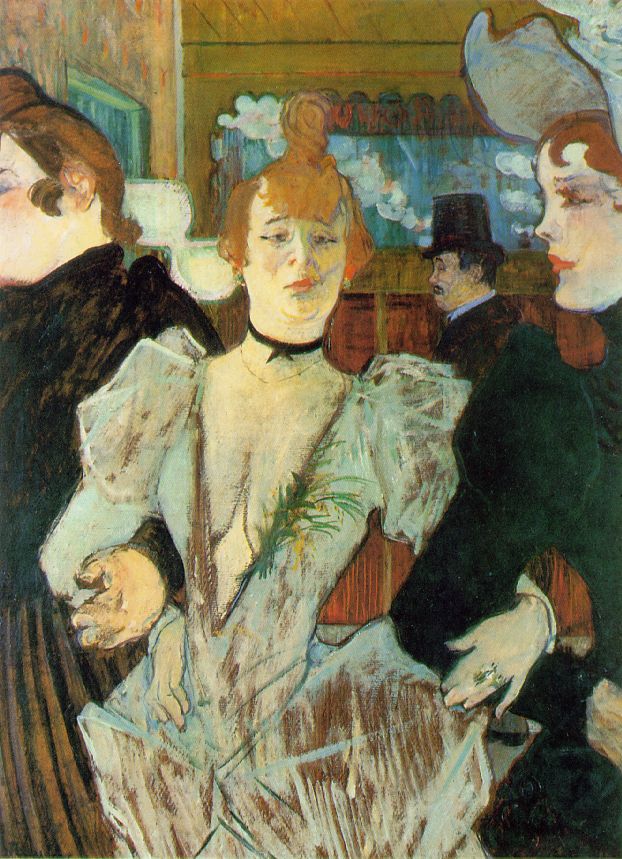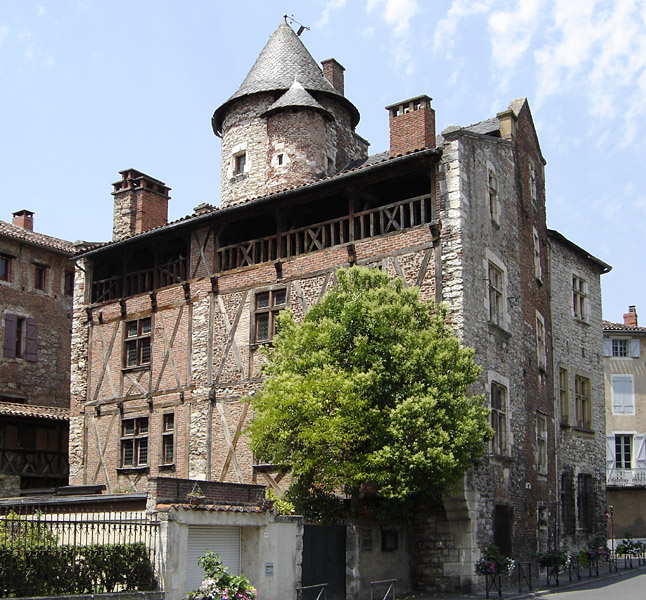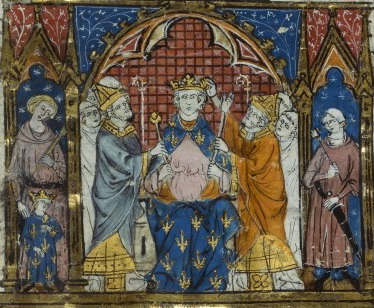|
Shepherds' Crusade (1320)
The Shepherds' Crusade of 1320 was a popular crusade in Normandy in June 1320. Also well known as "the Pastoureaux of 1320". It originally began when a large group of common-folk banded together to preach a crusade after a teenage shepherd said he was visited by the Holy Spirit. Initially aiming to help the Reconquista of Iberia, it failed to gain support from the church or nobility and instead murdered hundreds of Jews in France and Aragon. In the beginning, the movement was aimed against Islam and for ethnic cleansing of Muslims in Spain for the sake of purification of the society. Later however, when the would-be crusaders moved out of Normandy towards the south of France, their target became the Jews. The movement's actions were not only an expression of antisemitism, but also a protest against the economic policies of the royals and the monarchy. Causes The causes of the movement are complex; however, at the time a series of famines had set in related to climatic changes (t ... [...More Info...] [...Related Items...] OR: [Wikipedia] [Google] [Baidu] |
Religious War
A religious war or a war of religion, sometimes also known as a holy war ( la, sanctum bellum), is a war which is primarily caused or justified by differences in religion. In the modern period, there are frequent debates over the extent to which religious, economic, ethnic or other aspects of a conflict are predominant in a given war. The degree to which a war may be considered religious depends on many underlying questions, such as the definition of religion, the definition of 'religious war' (taking religious traditions on violence such as 'holy war' into account), and the applicability of religion to war as opposed to other possible factors. Answers to these questions heavily influence conclusions on how prevalent religious wars have been as opposed to other types of wars. According to scholars such as Jeffrey Burton Russell, conflicts may not be rooted strictly in religion and instead may be a cover for the underlying secular power, ethnic, social, political, and econo ... [...More Info...] [...Related Items...] OR: [Wikipedia] [Google] [Baidu] |
Avignon
Avignon (, ; ; oc, Avinhon, label= Provençal or , ; la, Avenio) is the prefecture of the Vaucluse department in the Provence-Alpes-Côte d'Azur region of Southeastern France. Located on the left bank of the river Rhône, the commune had a population of 93,671 as of the census results of 2017, with about 16,000 (estimate from Avignon's municipal services) living in the ancient town centre enclosed by its medieval walls. It is France's 35th largest metropolitan area according to INSEE with 336,135 inhabitants (2019), and France's 13th largest urban unit with 458,828 inhabitants (2019). Its urban area was the fastest-growing in France from 1999 until 2010 with an increase of 76% of its population and an area increase of 136%. The Communauté d'agglomération du Grand Avignon, a cooperation structure of 16 communes, had 192,785 inhabitants in 2018. Between 1309 and 1377, during the Avignon Papacy, seven successive popes resided in Avignon and in 1348 Pope Clement VI b ... [...More Info...] [...Related Items...] OR: [Wikipedia] [Google] [Baidu] |
Pope John XXII
Pope John XXII ( la, Ioannes PP. XXII; 1244 – 4 December 1334), born Jacques Duèze (or d'Euse), was head of the Catholic Church from 7 August 1316 to his death in December 1334. He was the second and longest-reigning Avignon Pope, elected by the Conclave of Cardinals, which was assembled in Lyon through the work of King Louis X's brother Philip, the Count of Poitiers. Like his predecessor, Clement V, Pope John centralized power and income in the Papacy and lived a princely life in Avignon. John excommunicated the enemies of Edward II of England, while warning Edward of a possible reassessment of the papal grant of Ireland. He opposed the political policies of Louis IV of Bavaria as Holy Roman Emperor, which prompted Louis to invade Italy and set up an antipope, Nicholas V. John opposed the Franciscan understanding of the poverty of Christ and his apostles passing multiple papal bulls to enforce his views. This led William of Ockham to write against unlimited papal pow ... [...More Info...] [...Related Items...] OR: [Wikipedia] [Google] [Baidu] |
Toulouse
Toulouse ( , ; oc, Tolosa ) is the prefecture of the French department of Haute-Garonne and of the larger region of Occitania. The city is on the banks of the River Garonne, from the Mediterranean Sea, from the Atlantic Ocean and from Paris. It is the fourth-largest city in France after Paris, Marseille and Lyon, with 493,465 inhabitants within its municipal boundaries (2019 census); its metropolitan area has a population of 1,454,158 inhabitants (2019 census). Toulouse is the central city of one of the 20 French Métropoles, with one of the three strongest demographic growth (2013-2019). Toulouse is the centre of the European aerospace industry, with the headquarters of Airbus, the SPOT satellite system, ATR and the Aerospace Valley. It hosts the CNES's Toulouse Space Centre (CST) which is the largest national space centre in Europe, but also, on the military side, the newly created NATO space centre of excellence and the French Space Command and Space Academy. T ... [...More Info...] [...Related Items...] OR: [Wikipedia] [Google] [Baidu] |
Albi
Albi (; oc, Albi ) is a commune in southern France. It is the prefecture of the Tarn department, on the river Tarn, 85 km northeast of Toulouse. Its inhabitants are called ''Albigensians'' (french: Albigeois, Albigeoise(s), oc, albigés -esa(s)). It is the seat of the Archbishop of Albi. The episcopal city, around the Cathedral Sainte-Cécile, was added to the UNESCO list of World Heritage Sites in 2010 for its unique architecture. The site includes the Musée Toulouse-Lautrec, dedicated to the artist who was born in Albi. Administration Albi is the seat of four cantons, covering 16 communes, with a total population of 72,416 (2019). History The first human settlement in Albi was in the Bronze Age (3000–600 BC). After the Roman conquest of Gaul in 51 BC, the town became ''Civitas Albigensium'', the territory of the Albigeois, ''Albiga''. Archaeological digs have not revealed any traces of Roman buildings, which seems to indicate that Albi was a modest Ro ... [...More Info...] [...Related Items...] OR: [Wikipedia] [Google] [Baidu] |
Cahors
Cahors (; oc, Caors ) is a commune in the western part of Southern France. It is the smallest prefecture among the 13 departments that constitute the Occitanie Region. The main city of the Lot department and the historical center of the Quercy, Cahors is home to 19,878 ''cadurciennes'' and ''cadurciens''. Nestled in a meander of the Lot and surrounded by steep arid limestone hills, this historic city is home to a great monumental diversity, mainly inherited from Roman times and the Middle Ages; the city's monuments include a historic city centre, Saint-Étienne cathedral, Roman walls and the famous Valentré bridge (a UNESCO World Heritage Site as part of the pilgrimage path to Santiago de Compostela). Famed for its wine and gastronomy (truffles and foie gras), this southern French city holds the label of the French Towns of Art and History. The Cadurcian economy is reliant on tertiary services and makes Cahors the Lot's economic centre. History Cahors has had a ric ... [...More Info...] [...Related Items...] OR: [Wikipedia] [Google] [Baidu] |
Verdun-sur-Garonne
Verdun-sur-Garonne (, literally ''Verdun on Garonne''; oc, Verdun de Garona) is a commune in the Tarn-et-Garonne department in the Occitanie region in southern France. Monuments Verdun-sur-Garonne Hotel de Ville.jpg, Town Hall Église de l'Assomption-et-de-Saint-Michel de Verdun-sur-Garonne Clocher.jpg, St. Michel Church Église de l'Assomption-et-de-Saint-Michel de Verdun-sur-Garonne Les deux nefs.jpg, St. Michel Church Verdun-sur-Garonne - La Halle - Exterieur.jpg, The Market hall. Verdun-sur-Garonne - Monument aux Morts.jpg, War memorial See also *Communes of the Tarn-et-Garonne department The following is a list of the 195 communes of the Tarn-et-Garonne department of France. The communes cooperate in the following intercommunalities (as of 2020): [...More Info...] [...Related Items...] OR: [Wikipedia] [Google] [Baidu] |
Saintes, Charente-Maritime
Saintes (; Poitevin-Saintongeais: ''Sénte'') is a commune and historic town in western France, in the Charente-Maritime department of which it is a sub-prefecture, in Nouvelle-Aquitaine. Its inhabitants are called ''Saintaises'' and ''Saintais''. Saintes is the second-largest city in Charente-Maritime, with inhabitants in 2008. The city's immediate surroundings form the second-most populous metropolitan area in the department, with inhabitants. While a majority of the surrounding landscape consists of fertile, productive fields, a significant minority of the region remains forested, its natural state. In Roman times, Saintes was known as '' Mediolanum Santonum''. During much of its history, the name of the city was spelled Xaintes or Xainctes. Primarily built on the left bank of the Charente, Saintes became the first Roman capital of Aquitaine. Later it was designated as the capital of the province of Saintonge under the Ancien Régime. Following the French Revolution, it b ... [...More Info...] [...Related Items...] OR: [Wikipedia] [Google] [Baidu] |
Leper
Leprosy, also known as Hansen's disease (HD), is a long-term infection by the bacteria ''Mycobacterium leprae'' or ''Mycobacterium lepromatosis''. Infection can lead to damage of the nerves, respiratory tract, skin, and eyes. This nerve damage may result in a lack of ability to feel pain, which can lead to the loss of parts of a person's extremities from repeated injuries or infection through unnoticed wounds. An infected person may also experience muscle weakness and poor eyesight. Leprosy symptoms may begin within one year, but, for some people, symptoms may take 20 years or more to occur. Leprosy is spread between people, although extensive contact is necessary. Leprosy has a low pathogenicity, and 95% of people who contract ''M. leprae'' do not develop the disease. Spread is thought to occur through a cough or contact with fluid from the nose of a person infected by leprosy. Genetic factors and immune function play a role in how easily a person catches the disease. Lepro ... [...More Info...] [...Related Items...] OR: [Wikipedia] [Google] [Baidu] |
Grand Châtelet
The Grand Châtelet was a stronghold in Ancien Régime Paris, on the right bank of the Seine, on the site of what is now the Place du Châtelet; it contained a court and police headquarters and a number of prisons. The original building on the site may have been a wooden tower constructed by Charles the Bald in 870 to defend the then new Grand-Pont bridge (now replaced by the Pont au Change), but it is known that Louis VI built a stronger structure in stone, a ''châtelet'' ('small castle'), in 1130; it was called the Grand Châtelet in contrast to the Petit Châtelet built around the same time at the end of the Petit Pont, on the south bank of the Seine. It lost its defensive purpose in 1190 when Philip Augustus built a rampart around the perimeter of the city; from then on it served as the headquarters of the ''prévôt de Paris'', the official "charged with protection of royal rights, oversight of royal administration, and execution of royal justice" in late medieval Paris. T ... [...More Info...] [...Related Items...] OR: [Wikipedia] [Google] [Baidu] |
Philip V Of France
Philip V (c. 1293 – 3 January 1322), known as the Tall (french: Philippe le Long), was King of France and Navarre (as Philip II) from 1316 to 1322. Philip was the second son of King Philip IV of France and Queen Joan I of Navarre. He was granted an appanage, the County of Poitiers, while his elder brother, Louis X, inherited the French and Navarrese thrones. When Louis died in 1316, he left a daughter and a pregnant wife, Clementia of Hungary. Philip the Tall successfully claimed the regency. Queen Clementia gave birth to a boy, who was proclaimed king as John I, but the infant king lived only for five days. At the death of his nephew, Philip immediately had himself crowned at Reims. However, his legitimacy was challenged by the party of Louis X's daughter Joan. Philip V successfully contested her claims for a number of reasons, including her youth, doubts regarding her paternity (her mother was involved in the Tour de Nesle Affair), and the Estates General's determina ... [...More Info...] [...Related Items...] OR: [Wikipedia] [Google] [Baidu] |







